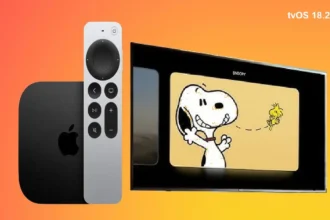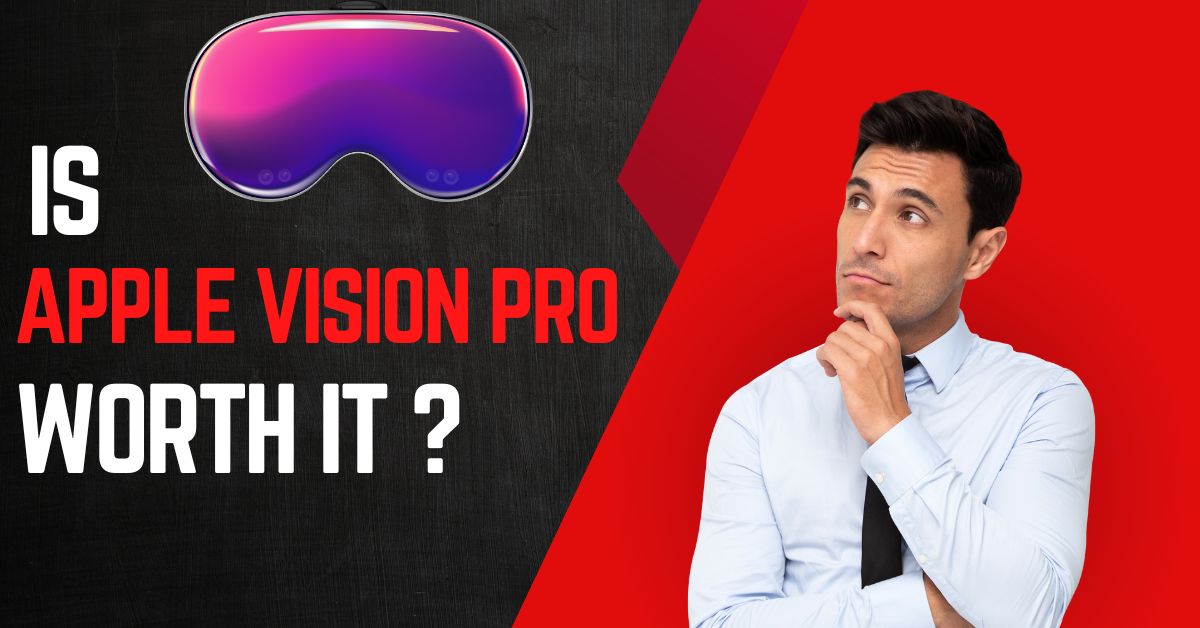Apple’s Vision Pro headset has generated a lot of buzz since its launch on February 2nd, 2023. As Apple’s first entry into the mixed reality market, the Vision Pro aims to revolutionize spatial computing with its advanced displays, sensors, and VisionOS operating system.
But with a starting price of $3,499, many are wondering – is the Vision Pro actually worth the steep price tag? So, let’s check out the Vision Pro’s features, use cases, and value proposition.
Vision Pro Hardware and Capabilities
The Vision Pro packs impressive hardware into a sleek, ski goggle-style design:
- Displays: Dual 3.5” 4K OLED microdisplays with retina resolution and support for HDR, delivering sharp visuals
- Cameras: Stereoscopic cameras plus additional cameras for tracking hands, eyes, and the environment
- Sensors: Accelerometer, gyroscope, LiDAR scanner, and more for precise tracking
- Audio: Spatial audio with dynamic head tracking creates immersive sound
- Chip: Custom Apple silicon with an 8-core CPU and 16-core neural engine provides power for smooth experiences
This hardware enables realistic mixed reality capabilities like passthrough AR, hand tracking, and environment meshing. The Vision Pro scans and understands rooms to anchor digital objects, allowing interactions between virtual and physical spaces.
Eye tracking allows intuitive hands-free control – simply look at an app icon to launch it. The Vision Pro also features FaceTime integration, allowing users to make video calls and see people’s faces and surroundings.
Key Use Cases and Experiences
So what can you actually do with the Vision Pro? Here are some of the key use cases and experiences highlighted by Apple:
Immersive Media Viewing
The high resolution displays let you view content on a massive virtual screen equivalent to a 100” TV. This creates a private, portable home theater great for movies, sports, and more.
Spatial Computing and Productivity
Run multiple virtual displays to expand your workspace. Leverage mixed reality to view 3D models, data visualizations, designs and collaborate in shared virtual rooms with colleagues.
High-Fidelity Gaming
Play cutting-edge games in full VR with stunning graphics and sound thanks to the power of VisionOS and custom silicon. Popular titles like Resident Evil Village and No Man’s Sky will be available.
Communication and Connection
Have more engaging video calls and share experiences with EyeSight AR allowing participants to see each other’s facial expressions and surroundings in real-time.
Key Pain Points
The Vision Pro aims to solve many of the issues holding back existing VR/AR headsets:
- Comfort: A lightweight, balanced design plus soft materials create all-day wearability
- Visual Quality: Best-in-class displays and lenses provide unparalleled visual fidelity
- Input: Intuitive eye, hand, and voice controls remove the need for controllers
- Connectivity: Easy interaction between real world and digital objects with environment meshing and spatial anchors
- Ecosystem: VisionOS allows access to existing iOS apps and services for continuity
By tackling these weak points, Apple hopes to drive mass adoption beyond gaming and niche enterprise use cases.
What Early Reviews Are Saying
So with these ambitious goals and a high price tag, does the Vision Pro live up to expectations? Early reviews have been generally positive while noting some limitations:
The display quality, passthrough AR, hand tracking, and overall polish earn consistent praise. Reviewers describe these aspects as “game-changing” and a “huge leap” over competitors.
However, the current Vision Pro is still quite bulky, and heavy, and lacks a killer app or must-have use case according to most reviewers. There are also questions about the utility and comfort during longer sessions.
So in the near term, the Vision Pro seems best suited for early adopters, developers, and certain professionals. But if Apple can iterate quickly and build out the VisionOS app ecosystem, the potential is there for more mainstream appeal down the road.
The Bottom Line
Given the $3,499 starting price, ambitious goals, and first-generation limitations – the Vision Pro is likely not “worth it” for average consumers yet. The current feature set and app catalog cater more to professionals, enterprise use cases, and early adopters.
However, over time as the technology matures, prices drop, and more visionOS apps launch, the value proposition for general consumers could shift dramatically. For now, your money is likely better spent on other devices unless you really need cutting-edge mixed reality capabilities today.
The Vision Pro does achieve an impressive technological leap in many areas like displays and input methods. If Apple can build upon this foundation and address weaknesses around ergonomics, battery life, and software, future generations of the Vision Pro may eventually deliver on the promise of revolutionizing personal computing through spatial experiences.






